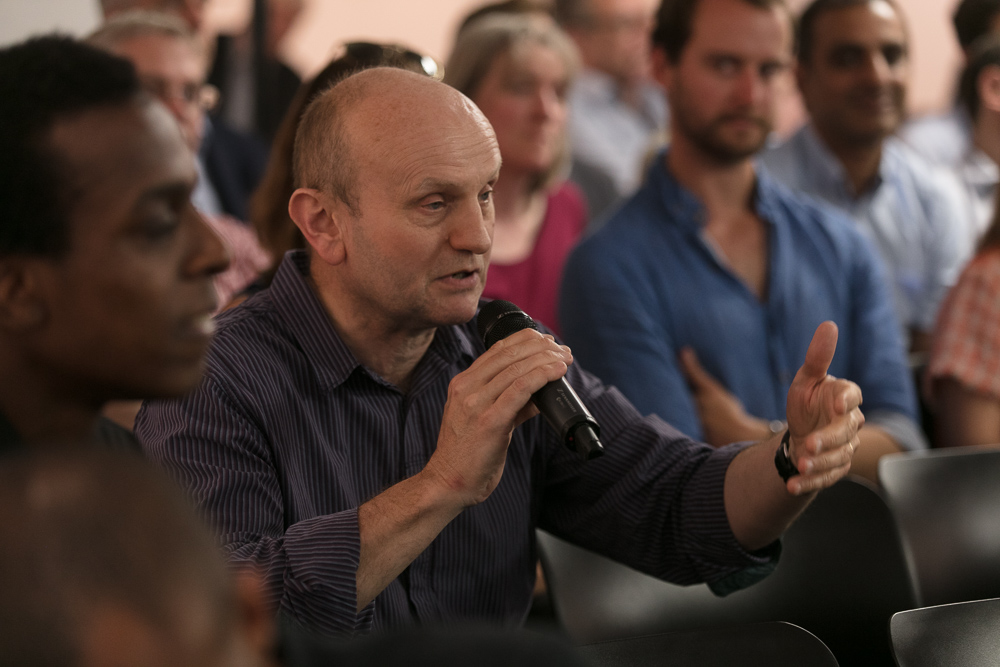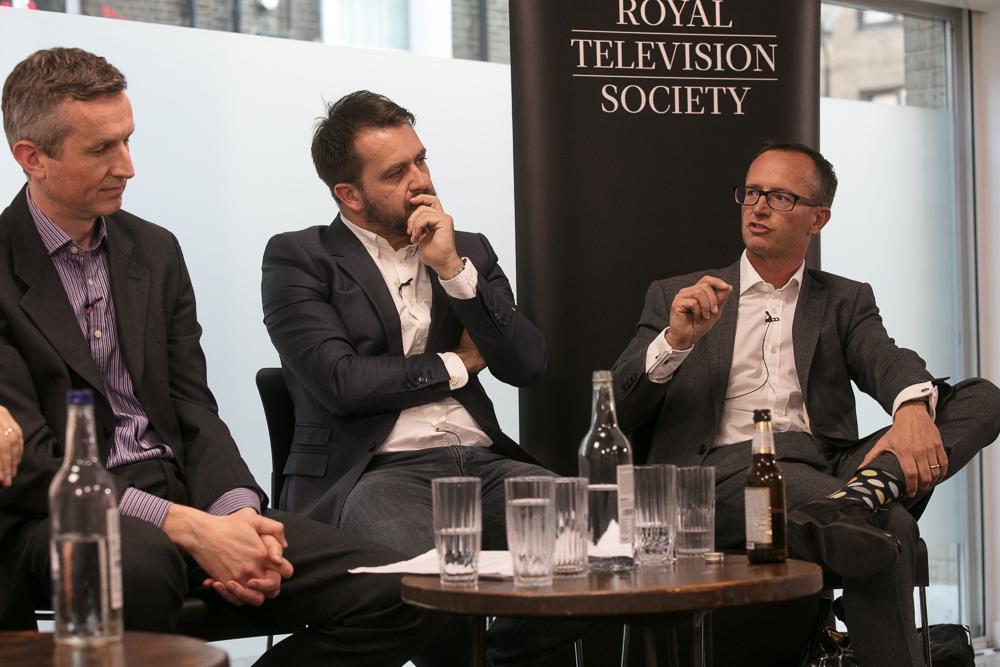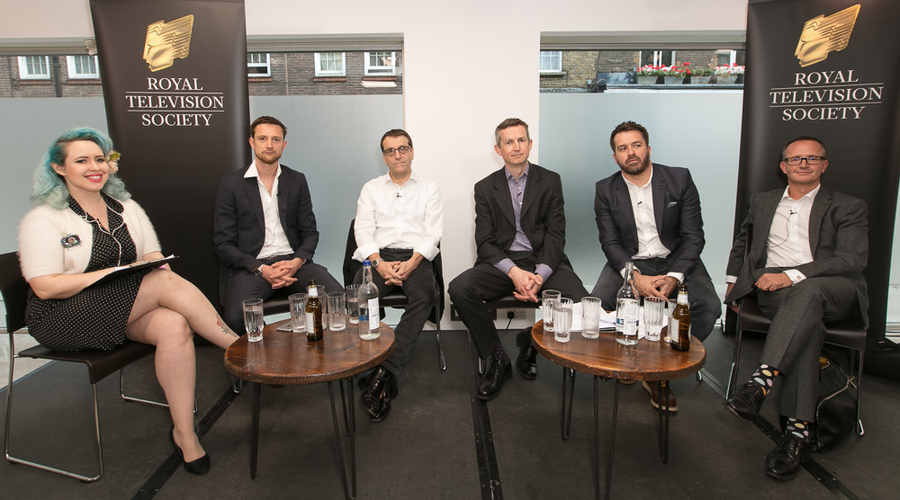An RTS panel explains why TV needs targeted advertising to compete with Facebook and Google. Steve Clarke crunches the numbers
Many broadcasters are convinced that targeted advertising is a silver bullet. They claim it will help level the playing field with Google and Facebook and so future-proof their businesses.
But at a packed RTS early-evening event, 'Is targeted advertising the future of TV?', it became clear that the debate over smart advertising’s role in commercial TV is more nuanced than that. It is conceivable that internet-delivered, personalised ads aimed at individuals will one day be as commonplace as driverless vehicles are expected to be.
In the UK, Sky and Channel 4 are pioneers in targeted advertising. Sky’s AdSmart was launched in early 2014.
Recently, Channel 5 signed up for the service; the terrestrial station’s advertising is sold by Sky.
Channel 4 debuted its targeted-advertising offer in 2013 on 4oD, the catch-up service subsequently rebranded as All 4; the move into addressable advertising was driven by CEO David Abraham’s conviction that “data is the new oil”.
In spite of the growth in online viewing and the threat to traditional TV’s business model posed by the tech behemoths, the RTS audience learnt that targeted advertising remains in a nascent state.

Sky, mindful of the competition from the likes of Netflix, reportedly believes that it can use AdSmart to boost advertising sales to £1bn by 2020, from under £800m last year.
Jamie West, deputy managing director, Sky Media UK, and group director of advanced advertising, outlined how targeted advertising had brought new advertisers to Sky, but declined to give any specific figures.
AdSmart’s ability to target local viewers and take money from local newspapers, radio and direct mail was a key selling point.
“Instead of being the domain of the big, the broad and the rich brands, it gives us the opportunity to talk to highly targeted advertisers and to local and regional audiences,” West explained.
“The breadth of advertisers on TV has never been greater. With two-thirds of advertisers being new to TV or new to Sky, we’re really growing.”
From Channel 4’s perspective, Jonathan Lewis, the station’s head of digital and partnership innovation, said that All 4 represented about 10% of the broadcaster’s revenues but only 3% to 4% of Channel 4’s total viewing.
And three-quarters of this 10% comes from targeted advertising based on data obtained from Channel 4’s registered user base of around 15 million people.
According to Chris Ladd, senior manager, advertising, media and campaign management at Nationwide, smart advertising was still worth less than 5% of total UK TV ad sales.
But YouView’s product and business development director, Simon Cook, suggested that – provided personalised TV advertising was sold properly – it could eventually account for around a fifth of British TV’s total advertising revenue.
The panellists needed no reminding of the power of the Silicon Valley giants in relation to the UK TV sector.
Ladd summed it up when he said: “The amount of money those guys are sitting on is phenomenal. At any point, they could come in and completely disrupt the UK market.
“In the blink of an eye, they could buy ITV with their small change. That would fundamentally change the content – and, potentially, the advertising – that is produced in this country.”
He claimed that, in the US, half of all households have subscriptions to Amazon Prime.
“At some time, that could pose a threat to the UK,” added Ladd. “But, for now, it’s the main broadcasters that most advertisers are looking at because they provide huge audiences and those water-cooler moments.
“That’s the magic of television and it’s those brands that still produce the best content.”
Highlighting the growth of online TV, Lewis said that, collectively, the number of UK subscribers to Netflix, Amazon and Now TV – owned by Sky – was approximately as big as the total number of Sky subscribers.

“Netflix now has a greater weekly reach among 16 to 24-year-olds than BBC iPlayer,” he explained. “Our job as broadcasters and platform operators is to meet that challenge and to compete.”
It was imperative for broadcasters to innovate in their advertising offers – Channel 4 recently gave All 4 viewers an opportunity to buy a bottle of Burberry fragrance monogrammed with an individual’s initials. Either that, or global online operators could end up eating TV’s lunch.
“You can’t ignore the revenue growth of Google and Facebook,” he warned. “I genuinely worry about what business we can have relative to those giants in the next three to five years.”
One way forward was for broadcasters and platforms to collaborate, he suggested. “If we all carry on doing our own thing, very quickly we become subsumed,” Lewis argued.
There have been reports that Sky is planning to get into bed with arch rival Virgin Media. The latter would join AdSmart and, in doing so, add around 3.7 million people to the service.
Targeted advertising gives broadcasters a level of detail concerning the habits and characteristics of individual viewers and their households (for example, pet ownership or having a south-facing garden) that companies such as Goggle possess routinely.
But it can be expensive.
Lewis said: “We can offer some great targeting on All 4 for specific audiences, interest groups and individuals, but that cost-per-thousand might come at a price that most advertisers won’t want to pay.”
All agreed that the growth of smart advertising depended on the availability of a bullet-proof, gold-standard measurement system similar to Barb, the bedrock of UK audience measurement since 1981 (see below).
Barb’s Project Dovetail, launched in 2015, to integrate digital consumption data with standard viewing figures, had started the ball rolling.
However, the growth of VoD services and social-media platforms was proving challenging for all those involved in media number crunching. Advertisers saw the benefits of addressable advertising – but buying it was still too complex due to the lack of consistent data across media.
“We’re coming from a world where everyone knows the currency for Barb linear advertising yet, in the VoD world, everyone has got their own, separate approach,” said Cook.
"Advertising effectiveness would remain hard to assess until there was “a standardisation of approach around measurement”.
More work needed to be done on how, for instance, people consumed advertising on mobile devices compared with, say, a Sky box. “You’ve got to make it simple for the advertisers,” stressed Cook.
Lewis acknowledged that, for a lot of people, addressable advertising was confusing. The targeted advertising available on linear TV was restricted to Sky, but targeted advertising on VoD platforms was more widely available.
Therefore, “agencies and advertisers are buying segmented audiences across a number of different video publishers”.
Media agency GroupM’s chief product officer for addressable TV, Rich Astley, said that the challenges tended to be more commercial than technical.
Nevertheless, set-top boxes were not always sophisticated enough to insert targeted online ads in real time.
Until this changed, big advertisers would remain reluctant to use targeted advertising across multiple platforms and broadcasters.
“Yes, linear viewing is declining in certain demographics but that is being compensated by on-demand viewing,” said Astley.
“The problem is that on-demand viewing isn’t accurately measured and, in some instances, even measured at all. It’s up to all of us on this panel to fix it and find a solution.”
West said: “The feedback I get from agencies and brands is, ‘How can you make this bigger across more platforms and make it easier for me to buy?’”
One of the issues for media buyers was the different definitions for viewing an ad online and watching one on TV. Lewis claimed that, on TV, a 30-second ad looked at for “95%-98% completion” counted as a single view.
Online “an impression” could be as little as “three seconds”, the time it takes to scroll down a Facebook feed on a mobile phone. Ladd thought that the tech companies needed to join Barb and “play by the same rules”.

He said: “Google is trying a bit. I understand that Facebook isn’t really trying at all. Therefore, it becomes difficult to have one standard currency.”
Ladd was surprised that many advertisers appeared to “turn a blind eye” not only to the measurement issues but also to “the brand-safety issues on YouTube and Facebook”.
The Nationwide executive continued: “It’s difficult for marketing directors to go to their CEOs and say: ‘You know what, I don’t think we should be on YouTube.’ They’ll be at home with their families spending more and more time on YouTube and wondering why my marketing director is not reckoning this.”
Ladd was scathing about YouTube’s failure to ensure that adverts were positioned at a safe distance away from “inappropriate content”, be it of a violent or sexual nature.
“If YouTube was a British video platform… I think that Ofcom would have shut it down immediately.
“Because it is a global company, it seems to operate above the laws of each individual country it operates in.
“It needs to be policed in those individual countries.”
‘Is targeted advertising the future of TV?’ was an RTS early-evening event, held at The Hospital Club in London on 24 May. The chair was Anna Dobbie, reporter at M&M Global. The producer was Vicky Fairclough, communications director at GroupM.
Why TV ads have a bright future
Jamie West, Sky: "In five to 10 years, Virgin, YouView, TalkTalk – all of the major platforms in the UK – will have an addressable TV proposition.
"There will be consistent measurement currencies, all making it easy for broadcasters, and for agencies and advertisers to buy...
"The future of TV has never been brighter. It is probably the most exciting period we’ve been in, and change is only going to accelerate."
Chris Ladd, Nationwide: "The percentages of revenues from addressable will increase from today’s 3%-4% to around 20%, but the amount of revenue that will be going into TV will be significantly bigger.
"This will be driven by new brands using TV and switching from other media such as direct mail.

"Potentially, there is a rosy future for TV advertising.… Audiences will still want those communal moments. Whoever pitched Gogglebox to Channel 4 must have thought, ‘This is never going to work’. But, in my view, it’s the greatest marketing tool for TV ever invented.
"People will still want to watch Bake Off, Sherlock – and hear what others think about them the next day...
"If it becomes addressable adverts and content is pre-selected by algorithm, rather than by a human scheduler, I think the magic of television will start to disappear. We need to remember that."
Is Barb still fit for purpose?
Q
Given how much information is available, how long will it be before Barb’s fairly restricted database is not of a high-enough quality for advertisers?
A
Chris Ladd, Nationwide: If Barb fails to keep up with technology, advertisers will have less confidence in TV and we’ll move our money somewhere else. But, at the moment, the online world doesn’t really have that.…
To be fair, if you’re talking about TV viewing 15 years ago to now, Barb has kept up. There have been a few bumps in the road but it is still doing a pretty good job.
A
Jamie West, Sky: Barb is recognised globally as the leading TV panel. But, probably more importantly, we’re quite fortunate in that, at Sky, we have a number of different viewing panels.
Barb is 5,100 households. We have a panel of 500,000 households and another one we use, which, by the autumn, will be about 6 million. They all tell us that Barb is accurate. If you are looking at overall aggregated viewing, covering a broad demographic across the country, Barb is spot on.…
It is about to award a new contract, so I think you will see another step change in capability. We need to recognise there is some constraint on what they can do but, as a planning and measurement tool for broad audiences and cross-platform consumption when we have Dovetail fully deployed, it’s spot on.
A
Rich Astley, GroupM: Clearly, in the world of AdSmart and All 4, we’re talking about fundamentally different data sets. Barb hasn’t been set up, say, to measure the number of hairdressers in Kent.
So, for some of the data sets we’re using, we all need to figure out how to collaborate to find out what is the standard data set we can agree on. It might be Virgin data, Sky data or Channel 4 data or agency data, but we need something that looks like a hybrid solution.
Question & answer
Q
One of the attractions of watching All 4 is that there are fewer ads than on linear TV. Will that last?
A
Jonathan Lewis, Channel 4: We have a restricted ad load, compared with the average of nine minutes you see on linear TV.
Consumer behaviour is changing fundamentally. We are seeing a huge reduction in viewing on browser-based platforms. Tablet-based viewing has flatlined.
All the growth is coming from “TeleVoD”, big-screen VoD on Samsung-connected TVs, on the Sky and Virgin platforms, etc. There will come a point where the advertising experience needs to mirror the linear advertising experience.
If you are a Sky customer you will recognise when you are in a VoD catch-up environment....It’s a very good question and is something that we wrestle with all the time.
Conversely, we do get challenged, both internally and externally, about the relative amount of adverts because people don’t like watching advertising [audience laughter)]. It’s the trade-off for being able to access great content.
A
Chris Ladd, Nationwide: By downloading that great content on All 4 and on other providers, the audience is more engaged.
And, because you think the ad break is going to be shorter, you’re even more engaged. It pains me to say it but, for an advertiser, we might, at some point, be prepared to pay a bit more.






